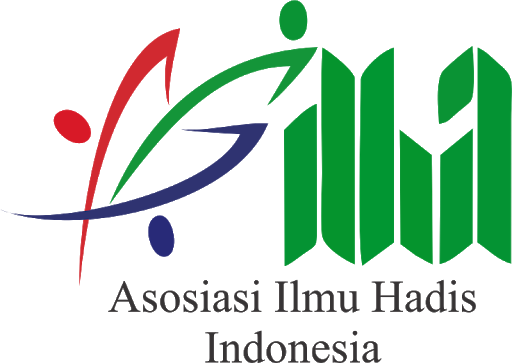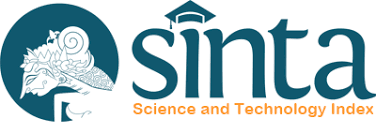The Relationship between the Jhungrojhung Tradition in Kajjan Village and the Hadith of Make an Easy on Others
Hubungan antara Tradisi Jhungrojhung di Desa Kajjan dengan Hadits Meringankan Beban Orang Lain
DOI:
https://doi.org/10.14421/livinghadis.2023.4740Keywords:
Jhungrojhung Tradition; Kajjan Village; Humanistic; Hadith of the Prophet.Abstract
Mutual cooperation, which are a characteristic of Indonesian society have experienced many shifts because the motive is no longer caring for the surrounding community, but the money that is the reward. However, there are still forms of cooperation practices based on caring, such as those in Kajjan Village which is called Jhungrojhung. This article discusses the relationship between the practice of jhungrojhung and the hadith of the Prophet as its main basis. Furthermore, this research focuses on two problem formulations; First, what is the essence of the Jhungrojhung tradition in Kajjan Village, District. Blega Kab. Bangkalan?; and second, how does the Jhungrojhung Tradition correlate with the hadith of the Prophet saw? These questions were analyzed using a qualitative approach based on field studies and supported by a phenomenological approach. As a result, there was no shift in values in the practice of Jhungrojhung in Kajjan village because there was no economic class dichotomy in the Kajjan village community. Apart from that, the Prophet's hadith regarding for people who assist others is the main motivation and practical basis for this practice, so its existence can still be felt today.
 Abstract viewed: 498 times
|
Abstract viewed: 498 times
|
 pdf downloaded = 201 times
pdf downloaded = 201 times
References
‘Aḥmad bin Ḥanbal. (2001). Musnad al-Imām Aḥmad bin Ḥanbal. Muassasah al-Rasālah.
A.J. Wensinck. (1936). Al-Mu’jam al-Mufahras li al-Fāẓ al-Ḥadīth al-Nabāwī (Vol. 5). Bril.
Al-`Asqalānī, I. H. (2002). Fatḥ al-Bārī Ṣarḥ Ṣaḥīḥ al-Bukhārī (G. A. Ummah, Ed.; Vol. 14, p. 9). Pustaka Azzam.
al-Bukhārī al-Ju’fī. (1400). Al-Jāmī’ al-Ṣaḥīḥ al-Musnad Min Ḥadīthi Rasūlillāhi. al-Maṭba’ah al-Salafiyah.
Al-Naisābūrī. (2003). Al- Musnad al-Ṣaḥīḥ al-Mukhtaṣar Min al-Sunani Binaql al-‘Adli ‘An al-‘Adli ‘An Rasulillāhi Ṣallallāhu ‘Alaihi Wa Sallam. Dar al-Fikri.
al-Nawawī. (1392). Al-Manhāj Sharaḥ Ṣaḥīḥ Muslim ibn Ḥajjāj. Dar Ihyā’ al-Ṭurath al-‘Arabī.
Al-Raḥmān, M. A. ibn Ḥaidar A. ‘Abd. (1415). ‘Aun al-Ma’būd Sharah Sunan Abū Dāud (Vol. 13). Dar al-kutub al-‘Alamiyah.
Al-Tirmidhī, A. ’Isā M. ibn ’Isā. (1998). Al-Jāmi’ al-Kabīr. Dar al-Gharbi al-Islamī.
Arifin, R., & Yusuf, M. (2020). Toleransi Umat Beragama dalam Perspektif Hadis. As-Shaff: Jurnal Manajemen Dan Dakwah, 1(1).
Arja, I. (2022). Wawancara, (Warga Kajjan + Pedagang Rujak).
Bāqī, M. F. A. (2018). Terjemah al-Lu’lu’ wa al-Marjān Ṣaḥīḥ Bukhārī. PT Cordoba International Indonesia.
Dāud, A. (1996). Sunan Abī Dāud. Dar Kutub al-‘Alamiyah.
Dokumen, D. K. D. (2022). Dokumen Data Pemerintah Desa Kajjan Blega Bangkalan.
Faliha, A. (2019). Peran Sunan Cendana (Syaikh Zainal Abidin) dalam Proses Islamisasi di desa Kwanyar Bangkalan Madura. UINSA.
Hariyani, E. (2020). Tingkat perubahan sikap masyarakat terhadap budaya gotong royong di kampung sawit permai kecamatan dayun kabupaten siak provinsi riau. 3822.
M. Farhan Muzammily. (2017). Kiai Abdul Kamal; Kiai Prajjan ke-II. https://matamaduranews.com/kiai-abdul-kamal-kiai-prajjan-ke-ii/#gsc.tab=0
Mahmud, K. A. (2022). Wawancara, (Tokoh Masyarakat Kajjan).
Mahmudi, I. (2012). Islam Budaya Gotong Royong dan Kearifan Lokal. 450–458. https://doi.org/DOI httpsdoi.org10.32528ipteks.v2i2.1897
Mala, F. (2015). Otoritas Hadis-Hadis Bermasalah dalam Ṣāḥīḥ Bukhārī (p. 64). PT Elex Media Komputindo.
Mansur, M., Chirzin, M., Yusuf, M., Mustaqim, A., Suryadi, Suryadilaga, M. A., & Najwah, N. (2007). Metodologi Penelitian Living Qur’an Dan Hadis. Teras.
Muammar. (2022). Wawancara, (Kepala Desa).
Munir, M. (2021). Sejarah Terbentuknya Masyarakat Keturunan Sunan Cendana di Dusun Laok Leke Bangkalan. UINSA Surabaya.
Mu’tadzir. (2022). Wawancara, (Ust. Setempat).
Nasir. (2022). Wawancara, (Warga Kajjan).
Qudsy, S. Z., & Kusumadewi, S. (2016). Living Hadis: Genealogi, Teori dan Aplikasi. Jurnal Living Hadis, 1(1).
Qudsy, S. Z., & Kusumadewi, S. (2018). Living Hadis: Praktik, Resepsi, Teks, dan Transmisi. Q Media.
Salam, N. (2019). Living Hadis Integrasi Metodologi Kajian ‘Ulum Al-Hadis & Ilmu-Ilmu Sosial. CV Literasi Nusantara Abadi.
Sodikin, A., & Haqqi, M. N. (2022). Peran Dakwah Islam dalam Budaya Gotong Royong. An-Nida: Jurnal Komunikasi Islam, 14(1).
Sulimah, H. &. (2022). Wawancara, (Warga Kajjan).
Downloads
Published
Issue
Section
License
Copyright (c) 2024 Al Hasan Abdul Hakim, Fathur Rozi, Mustofa Holil, Moh. As’ad

This work is licensed under a Creative Commons Attribution-ShareAlike 4.0 International License.
- Authors who publish with this journal agree to the following terms:
- Authors retain copyright and grant the journal right of first publication with the work simultaneously licensed under a Creative Commons Attribution License that allows others to share the work with an acknowledgement of the work's authorship and initial publication in this journal.
- Authors are able to enter into separate, additional contractual arrangements for the non-exclusive distribution of the journal's published version of the work (e.g., post it to an institutional repository or publish it in a book), with an acknowledgement of its initial publication in this journal.
- Authors are permitted and encouraged to post their work online (e.g., in institutional repositories or on their website) prior to and during the submission process, as it can lead to productive exchanges, as well as earlier and greater citation of published work.
















